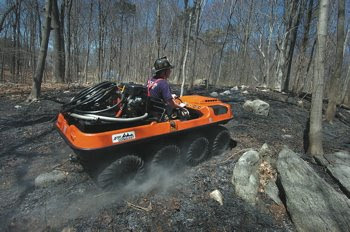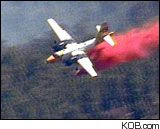From the Rocky Mountain News:
Originally published 09:24 p.m., April 15, 2008
Updated 12:43 a.m., April 16, 2008Wildfires in warm, windy weather burned into the southeast Colorado town of Ordway and on an Army post Tuesday. A firefighting pilot and two other people died.
All 1,100 residents of Ordway were told to leave, and authorities were not allowing anyone into to the city, said Chris Sorensen, acting spokesman for the Crowley County fire department.
Sorensen said the county coroner confirmed two of the deaths but did not provide any details as to how the people died or where they were found. KRDO Channel 13 in Colorado Springs reported that the two were firefighters and said they were crossing a bridge while riding in a firetruck. The bridge collapsed, trapping the two men underneath. Sorensen said he could not confirm that early this morning.
The pilot died when a crop-duster-type tanker crashed about 6:20 p.m. along Colorado 115 at mile marker 34 near Fort Carson, said Michael Fergus, a spokesman for the Federal Aviation Administration’s northwest region.
No passenger was aboard the plane. The downed aircraft and a second plane involved in the firefighting efforts flew from a base in Sterling, Fergus said.
The FAA believes that the plane was a contract service aircraft to the U.S. Forest Service, Fergus said. But a Forest Service spokesperson could not be reached late Tuesday to confirm it. Fergus said the second plane returned safely to the Sterling base.
The fire at Fort Carson had forced some evacuations late Tuesday and a shelter was set up at a special events center on base, Capt. Gregory Dorman said. The fire had burned about 9,000 acres by late Tuesday and was about 50 percent contained, officials said.
Much of the state was under a National Weather Service red flag warning, signifying high fire danger. Gov. Bill Ritter declared a state of emergency, freeing up state resources to help fight the fire. The Federal Emergency Management Agency on Tuesday night authorized the use of federal funds to help with firefighting costs.
Weather an obstacle
On the southeastern plains near Ordway, winds were gusting to 50 mph, humidity was low and temperatures reached into the 80s. Dry conditions on the plains and in some mountain valleys contrasted with deep snow at higher elevations.
Ordway, Colorado is 46 miles East of Pueblo, Colorado and 76 miles southeast of Colorado Springs.




